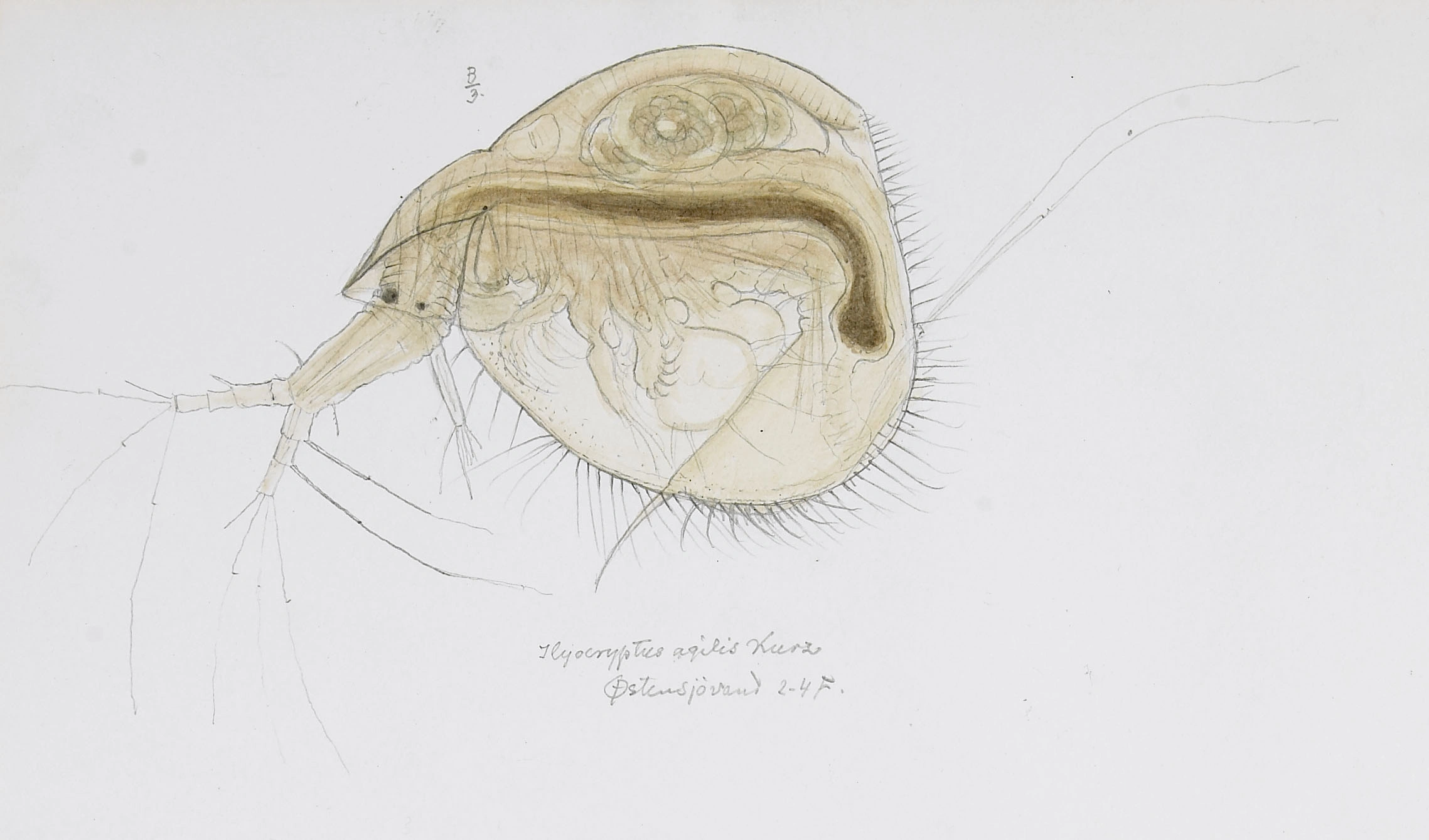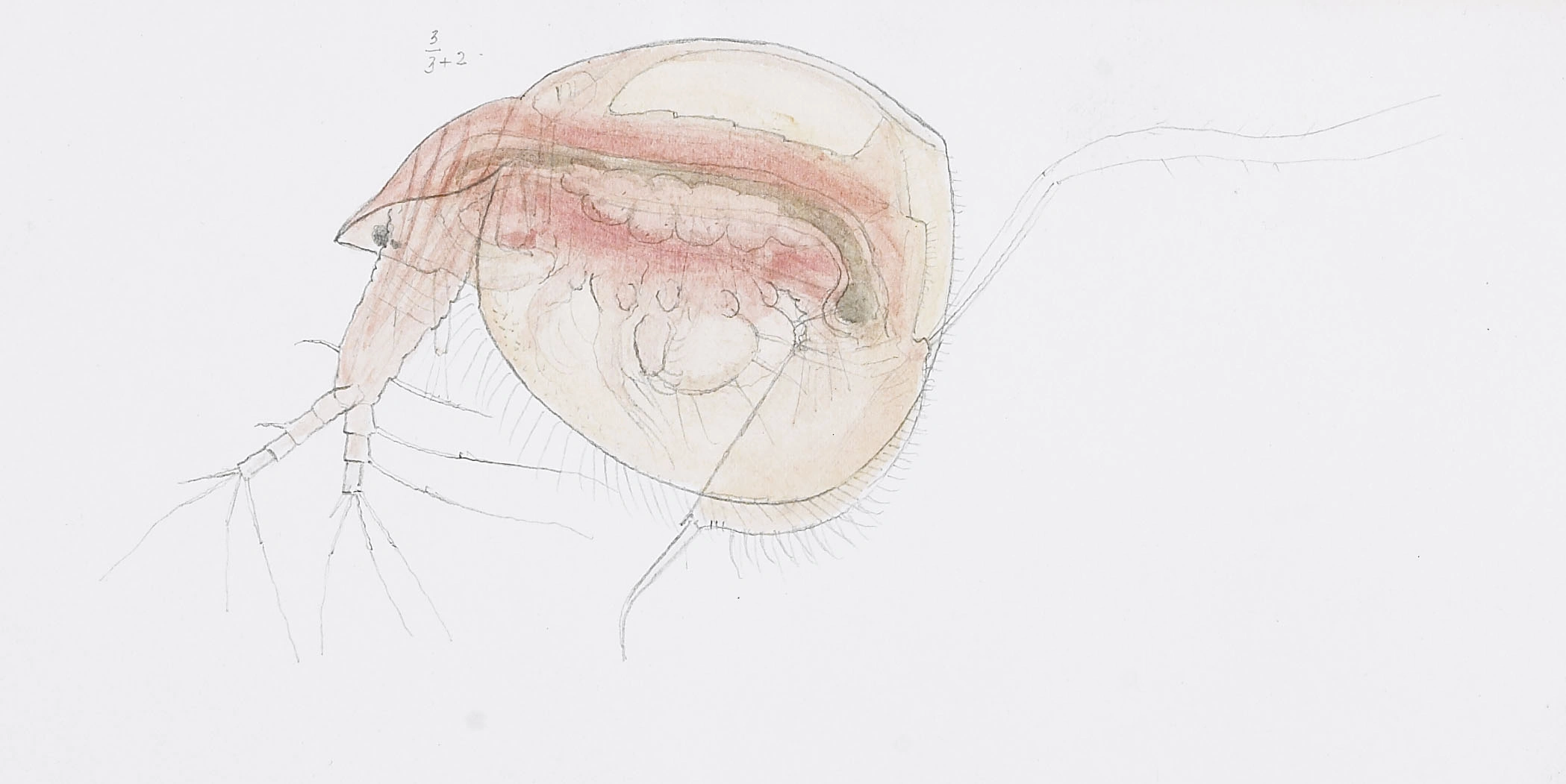Ilyocryptus agilis
Ilyocryptus agilis (female)
Ilyocryptus agilis is found in a few localities in the southeastern parts of Norway and is truly overlooked because it lives in the bottom sediment.
Key characteristics
Seen from the side, the head of Ilyocryptus agilis is more pointed than in I. acutifrons. Anteriorly on the dorsal side it has an incurvature. The first pair of antennae are long and slim as in I. sordidus, while the second pair are powerfully built. Its postabdomen has the same appearance as in A. acutifrons, much shorter and wider than in I. sordidus. Like I. sordidus there is an incurvature in the middle of the dorsal edge where the anus lies. This area of the postabdomen is armed with 4–5 strong denticles. The basal spines are short. It has a yellowish-brown or dark red colour. Some specimens may be more or less hyaline.
Female: Length 0.6–0.8 mm
Male: Length 0.4–0.7 mm
Ecology and distribution
I. agilis is only found in six water bodies which are randomly distributed in South Norway. All records are from the littoral of lakes situated below 700 m a.s.l. pH is close to neutral, while conductivity is 3–15 mS/m. Like other species within this genus, I. agilis may have been underestimated because it lives hidden in the mud.
| Vitenskapelig navn | < 4,5 | 4,5 - 4,9 | 5,0 - 5,4 | 5,5 - 5,9 | 6,0 - 6,4 | 6,5 - 7,0 | 7,0 - 7,4 | > 7,5 |
|---|---|---|---|---|---|---|---|---|
| 0 | 0 | 0 | 0 | 0,6 | 0,6 | 0 | 0 |
| Vitenskapelig navn | < 1,0 | 1,0 - 1,4 | 1,5 - 1,9 | 2,0 - 2,9 | 3,0 - 3,9 | 4,0 - 4,9 | 5,0 - 6,9 | 7,0 - 9,9 | > 10,0 |
|---|---|---|---|---|---|---|---|---|---|
| 0 | 0 | 0 | 0,3 | 0 | 0,6 | 0 | 0,9 | 0,4 |
| Vitenskapelig navn | < 0,01 | 0,01 - 0,09 | 0,1 - 0,9 | 1,0 - 9,9 | 10,0 - 99 | 100 - 999 | > 1000 |
|---|---|---|---|---|---|---|---|
| 0 | 0 | 0 | 0,3 | 0,4 | 0,3 | 2,2 |
| Vitenskapelig navn | < 100 | 100-299 | 300-499 | 500-699 | 700-999 | >1000 |
|---|---|---|---|---|---|---|
| 0,4 | 0,5 | 0 | 0,3 | 0 | 0 |
Look-alikes
Ilyocryptus acutifrons and I. sordidus


